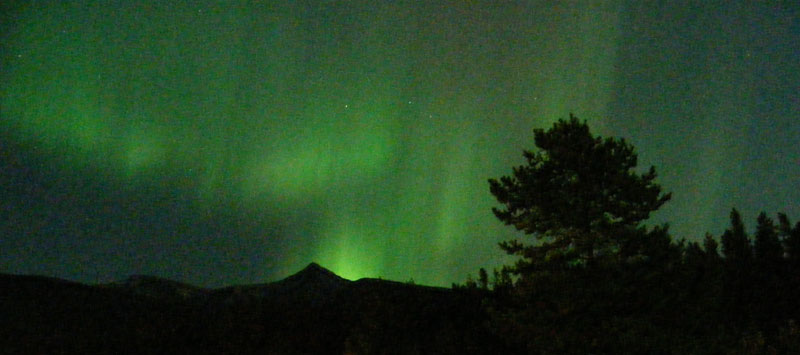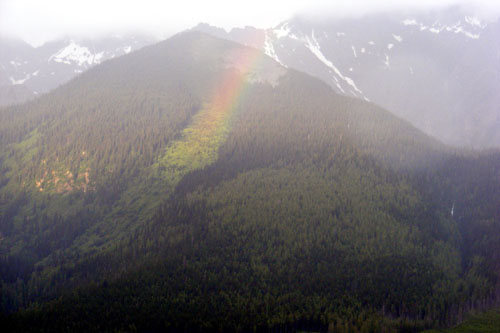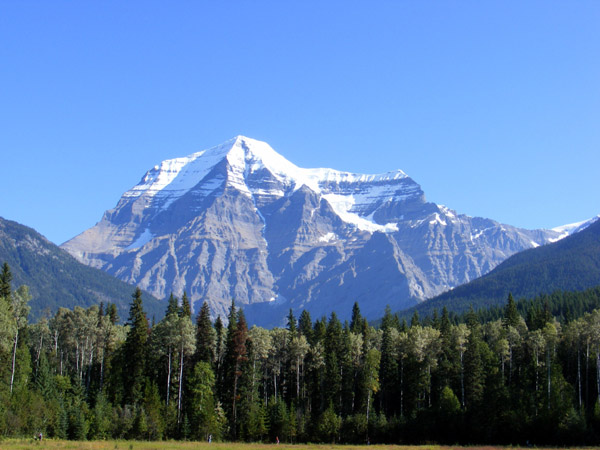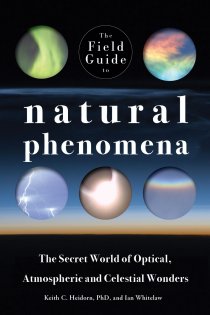 |
 |
| Home | Welcome | What's New | Site Map | Glossary | Weather Doctor Amazon Store | Book Store | Accolades | Email Us |
 | ||||||||||||||||||||||||||||||||||||||
Weather Almanac for October 2011WEATHER EYES LOOKING UPWhen I first began The Weather Doctor, most of my monthly almanacs either explained weather phenomena or waxed philosophically on the wonders of weather watching. In the past few years, I have moved more to history and explanation rather than the wonders of weather. But this past few months, I have taken more time to look skyward, particularly with my camera lens after an inspirational workshop on breaking photographic “rules” given by Matthew Wheeler of nearby McBride. Matthew is a photographer and artist of note and one of his fascinating photographic tools is the ice lens.
I should mention that Matthew got the idea for the ice lens years ago from a CBC radio show discussing a Jules Verne novel where the central characters fashion an ice lens to start a fire in the arctic that saves their lives. Wheeler decided to be a “mythbuster” on this story, but found that indeed one could fashion an ice lens that would start a fire with its focused beam. In fact, he did so at the workshop in a matter of minutes starting from a slab of ice. With the rekindling of my photographic interests, I began looking to the natural world around me for photographic subjects and, of course, the first direction I looked was skyward. I caught the usual cast of characters here this summer: gorgeous sunsets and sunrises; majestic clouds over the mountains, and rainbows. I checked each evening from late June to early August in hopes of catching the elusive noctilucent clouds, but came away empty. I missed some colorful sunsets colored by forest fire particles because I did not have my camera with me. Unfortunately, I also missed flashes of iridescence and an extremely bright rainbow, which just happened to appear to touch ground right on the railroad tracks. What I did catch was a spectacular display of the Northern Lights (aurora borealis) in early September, other rainbows, a night sky, some great cloud portraits, and one, sometimes elusive visage that I will end this piece with. Aurora Borealis: 9 September 2011I make it a habit on evenings when I am home and the sky is not cloud-covered, to check the latest satellite images on Space Weather for the strength of the auroral circle over North America. On the night of 9 September, I saw that an auroral display was possible here in east central British Columbia, but any display might be dimmed by a nearly full moon. At around 9:45 pm, I sauntered out the door to check the northeastern sky for any signs of auroral activity. And behold, despite the bright moon low in the southern sky, I saw the telltale haze of sheet auroras. I quickly ran into the house to grab my camera and inform some friends that tonight looked like a good night for aurora watching. I had barely finished setting the camera on the tripod and adjusting the shutter speed and f-stop (originally 4 seconds at f3.2) when curtains and curls of light erupted along a line from Mt McKirdy toward the town center. While I was snapping away, as fast as one can go at a 4-second shutter speed, I was on the phone to make sure others in town were seeing this.  My first good photo came just before 10 pm, and the strong activity continued for around 40 minutes. Thereafter, the aurora subsided back to haze and sheets with the occasional flare, which reminded me of my old friend heat lightning. I stayed on watch until just after midnight and then decided it was time to call it a night.
Aurora Borealis, 9 September 2011The above photographs are but a sample of what was captured that night. I have placed more on a page Auroral Photographs which can be accessed by clicking here. The photos displayed there are some of the 40 or so shots that I took. Note in several of the shots that the Big Dipper is prominently shining through the auroral light. With the return of increasing solar activity, such days should be increasing in the coming years, and I will be out watching at every opportunity. I am glad to know that my Fujifilm FinePix S700 digital camera is capable of capturing an aurora when set to manual control. Next time, I will experiment with shorter shutter speeds to see if I can get more detail. Since these aurora were in motion, some of the fine lines blurred with the 4-second exposure. Rainbows At Night; And At MorningRainbows are common here in Valemount as our summer rainfall often comes as showers produced by the surrounding mountain ridges. Therefore, they run the gamut of images from the short arc to the full crescent, and often they are accompanied by a strong secondary bow. They can be of extreme brightness, as was that “railroad-track” bow, or very faint, thus allowing the background to be easily visible. The image here on the right is one from 2010 where the massif of Canoe Mountain is visible through the primary bow. These images are of late afternoon/early evening rainbows taken from my front yard.
Rainbows photographed at Valemount, British Columbia on 1 September 2011The final rainbow photo is of a section of arc photographed in the early morning along the northern shore of Kinbasket Lake while on a camping night. (The overnight winds blowing down the lake rocked the camper, and I was glad that I was not in a tent.)  Morning Rainbow at Kinbasket Lake, Valemount BC, 14 August 2011Skies of Dusk, Skies of DawnI am always on the lookout for the glorious colors of dusk and dawn. Those at dusk often provide the most beauty because of the higher likelihood cumuli in the sky on which to paint the colors. Here are a few of the more spectacular shots from this summer.
Evening Sky 24 August 2011Sky At NightEven when I don’t check on the satellite view of the auroral ring, I often check the night sky prior to turning in. A few days after the auroral display at the height of the Harvest Moon, I noted that the high-level clouds surrounding the Moon were producing a corona. Having determined I could photograph the night sky, I quickly grabbed the camera, flipped the controls to Manual, and took a series of shots of the lunar light on the cloud deck. While the corona was not as detailed as I would have liked, several shots made interesting images.
Night Sky with Harvest Moon, 12 September 2011Cloud AppreciationAs my regular readers know, I have been a cloud watcher for more than half a century, and have taken more pictures of clouds than of any other subject (except perhaps my two children). The following are a few from this summer/early autumn that I feel are worth sharing.
A Special SightAs I promised in the introduction, one photo opportunity recently produced a skyscape that is not all that common. The visage was Mount Robson, the highest peak in the Canadian Rockies at 3954 metres (12,963 ft) and it was completely cloud-free with a totally clear surrounding sky. (The day in question, 10 September, saw the Mount Robson Marathon held with runners ascending the mountain trails to near Berg Lake, to an elevation about 500 m (1650 ft) above the start, and then descending to the Visitor Centre. I was there not as a runner, but as a painter, as we held a “paint-in” on the Centre deck.)  Many who have passed this majestic summit have not seen its peak; some even after repeated visits. The following shots show the clouded Robson taken at other times.
Mount Robson in the Canadian RockiesAs some know, I paint as well as photograph the world around me and have a gallery of some of my work. To see more of my photographic skyscapes, click the link here. Learn More From These Relevant Books
|
||||||||||||||||||||||||||||||||||||||
 |
Now AvailableThe Field Guide to Natural Phenomena: |
Now Available! Order Today! | |
 |
 |
Now |
The BC Weather Book: |


